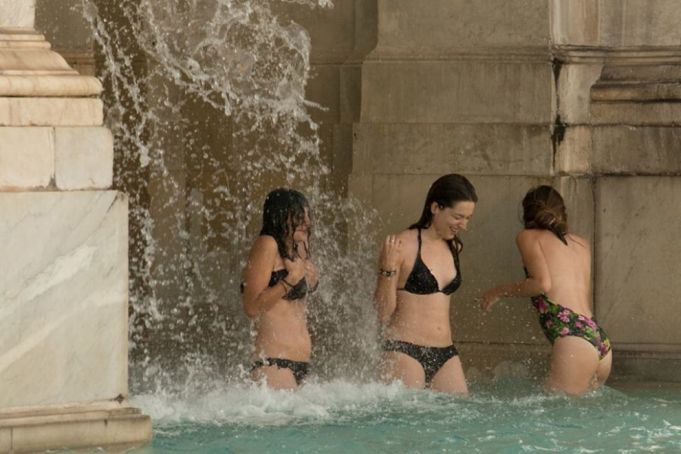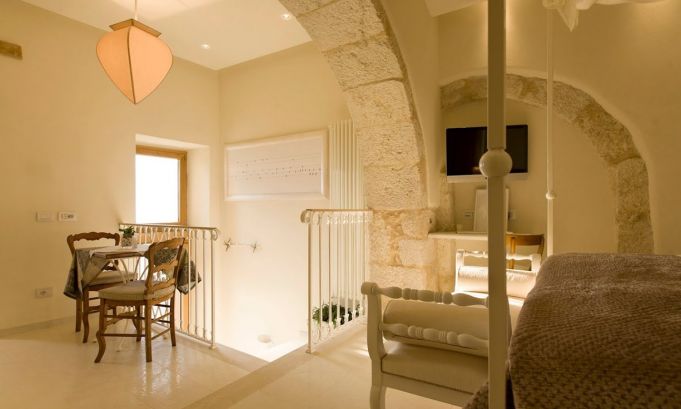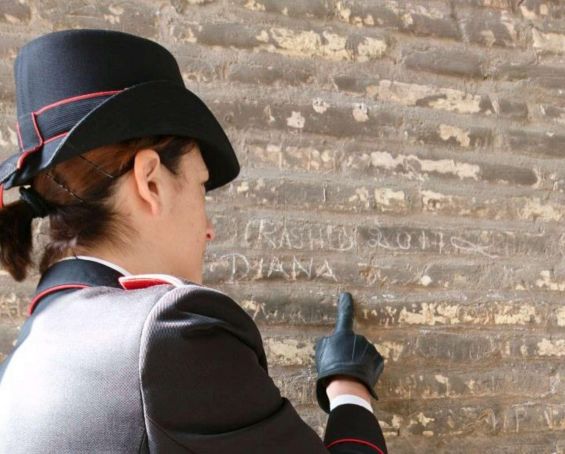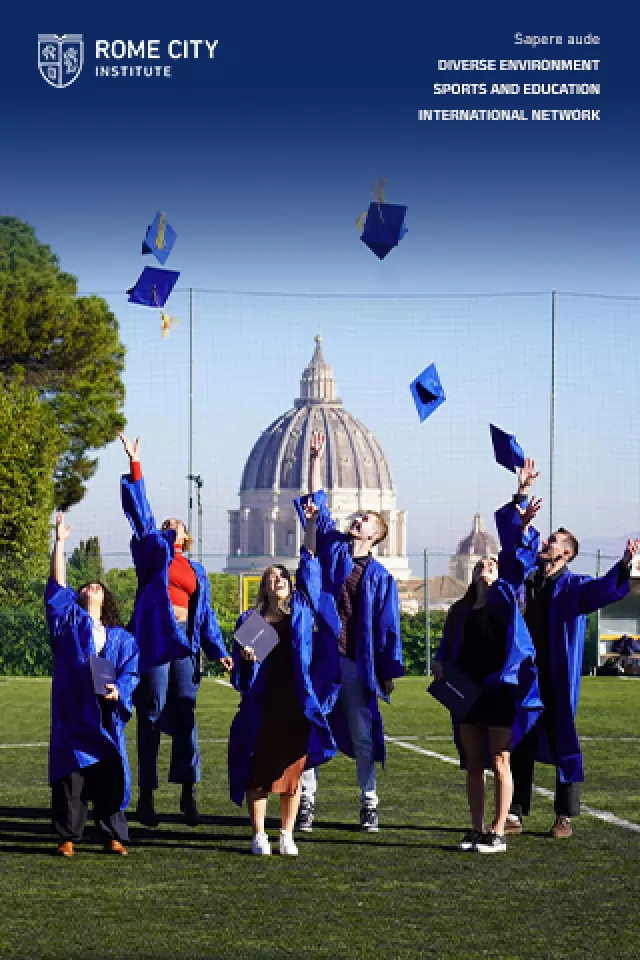By Mary Wilsey.
Tourists are spending less time and money in Rome
“There is one point which cannot be sufficiently impressed upon those who wish to take away more than a surface impression of Rome; it is never to see too much; never try to 'do' Rome. Nothing can be more depressing to those who really value Rome than to meet Englishmen hunting in couples through the Vatican galleries, one looking for the number of a statue in the guide book, the other not finding it; than to hear Americans describing the Forum as the dustiest heap of old ruins they have ever looked upon; or say of the Colosseum that ‘it will be handsome building when it is finished’; than to encounter a husband who boasts of having seen everything in Rome in three days while the wife laments that, in recollection, she cannot distinguish the Vatican from the Capitol, or St Peter's from St Paul's.”
These comments were not written today, although most of us could probably tell similar tales from our own experience. They were written a century and a half ago by Augustus Hare in his Walks in Rome. Hare was born in Rome, clearly loved his birth place even though he moved back to England, and his guide to the city became the blueprint for the “new” and much less formal travel writing that was to follow in the 20th century, Georgina Masson's Companion Guide to Rome being only one of many examples. Even today Hare is a wonderful companion for those who want to do more than just 'do' Rome and his classic guide is still in print.
Another of his observations in the introduction to the first edition published in 1871– the year after the unification of Italy – is even more astute. “When travellers arrive at Verona, for instance, or Arles, they generally go to the amphitheatres with a curiosity to know what they are like; but when they arrive at Rome and go to the Colosseum, it is to visit an object whose appearance has been familiar to them from childhood... as regards St Peter's, who is not familiar with the aspect of the dome, of the wide-spreading piazza and the foaming fountains, for long years before they come to gaze upon the reality?”
Precisely. We all think we know Rome even before we arrive. Rome is a sort of home. There is something so very familiar about the city that even the first-time visitor to the Colosseum or St Peter's feels as though it is “theirs”. Perhaps this explains the behaviour of some of today's tourists? Perhaps this is why they have an itch to take home a stone from the Forum, to sign their names on a column in the Colosseum, to leave their left-overs under Bernini's colonnade or to strip off and swim in the fountains? But to be fair, behind the vandalism and lack of respect there is also something else: the sheer Dolce Vita exuberance of being in Rome, the feel-like-Anita-Ekberg exhilaration of plunging into the Trevi Fountain in the heat of a summer evening. That, of course, was another age and anyone who does it today will face hefty fines and a trip to the police station.

Rome is now full of tourists trying to 'do' Rome more quickly and cheaply than ever before. Never mind the Colosseum and St Peter's; any resident will know that the Trevi Fountain to Piazza Navona route is now a tough struggle. Even though there are several ways to go – one of the endless joys of Rome is how many little streets connect the same two places – it is now crammed with lines of often bored-looking tourists strung out behind an equally bored-looking guide holding a flag or umbrella.
Is Rome getting to a saturation point? According to the numerous available figures it looks as though this could be the case.
A familiar city
The head of Rome's retail organisation, Confesercenti, confessed to the daily newspaper La Repubblica in the summer that retails sales from the beginning of the year until July were down 20 per cent on the same period the previous year. Part of it is due to the still-sluggish economy but part also to low-cost tourism, to those who typically “eat a sandwich for lunch, pizza for dinner and spend their money on cheap souvenirs.” Confesercenti chief Valter Giammaria might have added that they also spend much less on accommodation, preferring very short self-rentals rather than what were only a few years ago exaggeratedly expensive hotels. As with Ryanair, the likes of Airbnb have brought the prices down.
Milan edges ahead of Rome
According to Bank of Italy figures foreign tourists spent €5.6 billion in Rome in 2016, which was €600 million less than the previous year. However over the same period spending in the rest of Italy was up by 8.7 per cent, a warning indeed for Rome. Even Milan, in the wake of the crowd-pulling Expo2015, now claims that it has a higher hotel occupancy than Rome, something that would have been unheard of several years ago. According to the city's chamber of commerce Milan's hotels are 68 per cent full compared with Rome's 55.6 per cent.
Facts and figures
There are so many figures available that it is difficult to know which to take. The Bank of Italy tracks tourism to calculate the balance of payments; ISTAT, the national statistics institute, because the sector is a weather-vane for the economy; the ministry of culture because it is also the ministry of tourism; ENIT, Ente Nazionale Italiano per il Turismo, because its job is to promote tourism to Italy abroad, the Coldiretti farmers' association because of food and agritourism. The list goes on and on, which all goes to show the importance of tourism to the economy. Tourism accounts for about 11.1 per cent of Italy's GDP and employs some 2.5 million people, which explains in part why the figures are examined with the interest of ancient Romans looking for omens in the entrails of a sacrificial bull.
A good summer season
This summer the figures were considered so satisfactory that they have been highlighted on the ministry of culture's website. The delight is probably because tourism's percentage of GDP is finally up from the nine per cent slump of ten years ago. However it is still not back to the 13 per cent seen in 2000 when the government and the city made a big effort to get Rome in the best possible condition for the bi-millenium Holy Year.
Both the economic crisis and terrorism have clearly had an effect. Anyone who was in Rome immediately after the Bataclan killings in Paris in November 2015 will remember how the streets, tourist sites and shops suddenly emptied overnight. Another of the problems is that Italy is so obviously full of tourist attractions – whether beaches, mountains or cultural cities – that there has been no pressing need to guide visitors in any particular direction.
Themed tourism
There now seems to be a change and the ministry of culture and tourism is making more of an effort to decentralise and de-seasonalise the tourist trade, in other words to move people away from the obvious art cities and from the main seasons. 2016 was themed as the year of walks; this year it is the turn of the borghi, or little villages, as part of the ministry's 2017-2022 strategic plan for tourism.
Alberghi diffusi
Just as agritourism was one of the fashionable ideas a few years ago now it is the turn of the alberghi diffusi. These are pre-existing premises in small villages – whether rooms or apartments – which are restored to the same standard as a hotel. They are scattered throughout the village or hamlet but are within 200m of a existing central restaurant and refreshment area, which also acts as the administrative hub. These alberghi diffusi are ideally suited to the economy of small and still-viable historic centres (abandoned borghi are excluded from the scheme), and are producing a new form of sustainable, or slow, tourism designed both to give visitors a different flavour of Italian life and to prevent the depopulation of historically important areas. The idea was born during the reconstruction in the wake of the 1976 earthquake in Friuli and has since been taken up all over Italy. It is thought that the concept will be ideally suited to the redevelopment of the central Apennines areas hit by the 2016 and 2017 earthquakes.

Respect Rome
For those who already know and love Italy these hotels are undoubtedly a different and attractive way of seeing the country, but for those who are coming for the first time, who wouldn't chose Rome or Florence or Venice? Venice suffers from much the same overcrowding as Rome and this year the city started a Respect Venice campaign to prevent visitors diving off its bridges into the canals, picnicking in public places and wearing beach wear around the city.

Maybe Rome should start a Respect Rome campaign too. But if its streets are dirty, its hospitality services are unhelpful, public transport and taxis are unreliable and if the mayor is unable to project a better image of the city she governs that could be why many tourists no longer care.
For more details about alberghi diffusi see the association website www.alberghidiffusi.it. Airbnb has also recently launched a project in collaboration with the ministry of culture to promote alberghi diffusi, see www.italy.airbnbcitizen.com.
The original article was published in the October edition of Wanted in Rome

















